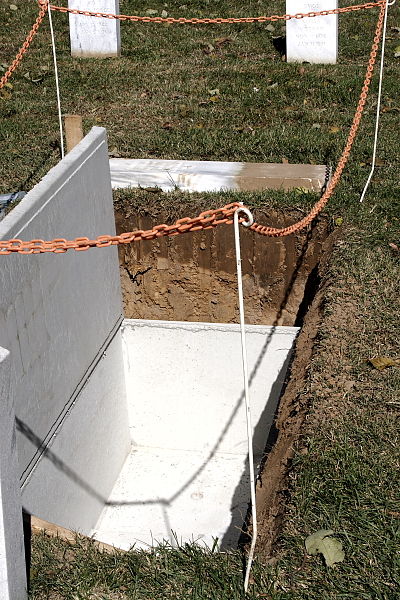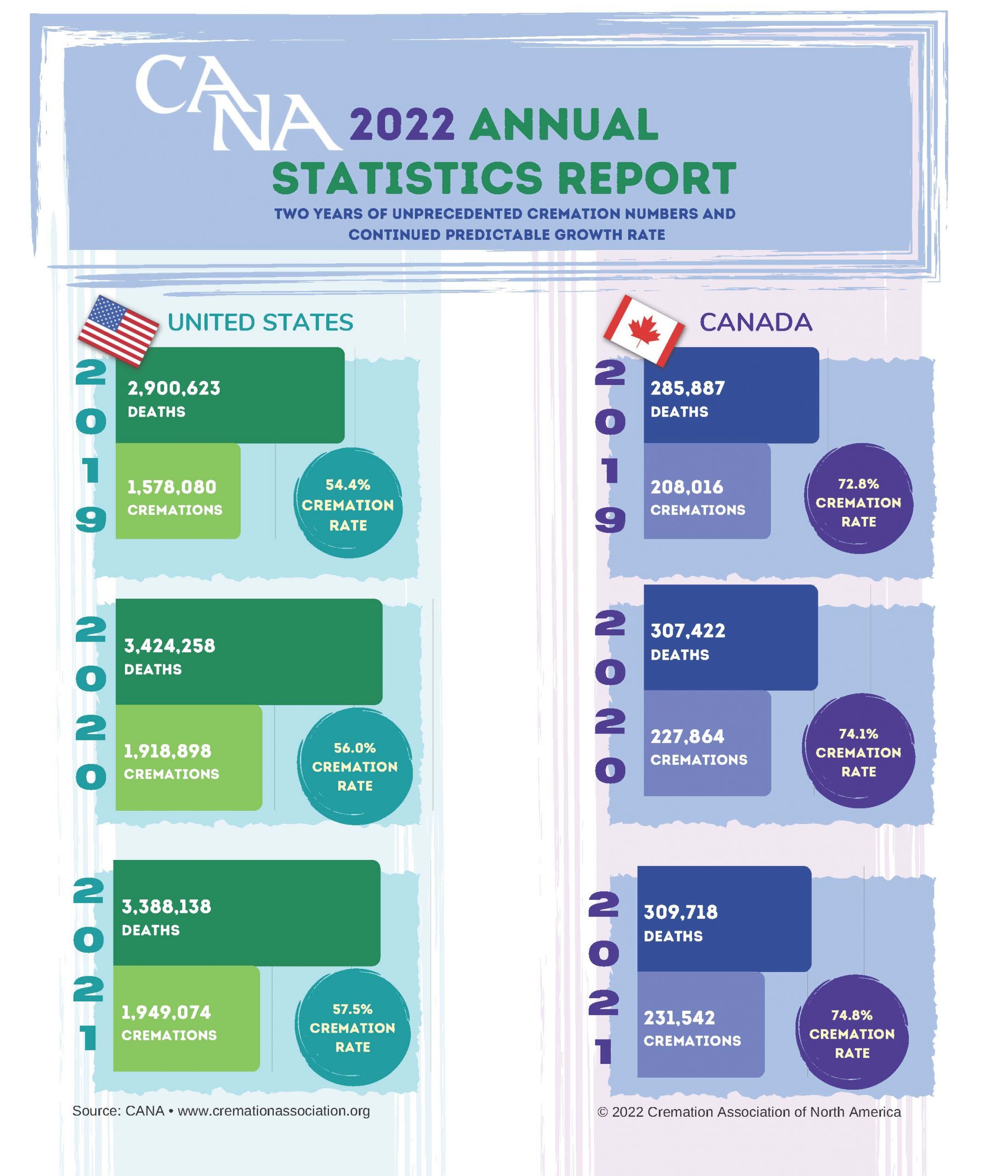Sarah Grace
Embalming

Embalming is a method/tool of body perseveration dating back to ancient Egypt, where the practice of mummification was used to ensure the preservation of the body, a requirement for the afterlife (Gannal, 2015; mummification, n.d.). Mummification is a multi-step process involving: organ removal, the drying out of the body; the wrapping of the body; the application of resin and oils; and eventually sealing the mummy in a sarcophagus (Gannel, 2015; Mummification, n.d.). There is evidence that mummification was used in many civilizations for thousands of years (e.g., Incan, Aztec, Africa, ancient Europe, Indigenous people of Australia, etc.) (Mummy History, August 21, 2018). In some cultures, evidence points to mummification as a process reserved for royalty or the privileged class, but in others it was more widely available. For example, in Sicily in the 18th and 19th centuries mummifying was also available to the middle class (Giuffra et al., 2006).
The modern concept of embalming began in the mid-1800s during the U.S. Civil War as a means to preserve bodies for the transport home for burial (See Chapter on Historical Beliefs and Death-Related Practices). The popularization of embalming and the beautification of the corpse, led to increasing demand for the service and the emergence of the modern funeral industry (Doughty, 2017; FCASMC, n.d.). Current embalming practices involve replacing the body’s blood with chemicals that help prevent body decomposition (Doughty, 2017; Chavez, 2019). The body is then further protected from decay that occurs after burial by the layers of metal and wood that surround caskets (Doughty, 2017) and entombment in a vault (see Burial below). Today, traditional embalming services cost around $800 (Prices, n.d.), however, the U.S. company Summun, is offering modern mummification services. The process takes around 90 days and costs approximately $67,000 USD (Morton, March 28, 2014).
Burial

As noted in the chapter on the History of Death and Death-Related Practices, burial is an ancient form of body disposal. However, what we consider traditional burial practices today largely developed in the mid-1800s in the United States with the rise of embalming and the professionalization of the funeral industry (Walsh, 2017). Embalming became more popular during the Civil War, as it allowed for the preservation of bodies for transportation over long distances (Laderman, 2003).
Today, burial typically involves the purchase of a burial plot, a wood or metal casket, and an outer burial container (Doughty, 2017). Burial containers generally come in two forms: burial vaults and grave liners. Both serve to prevent soil sinkage as the casket and body decompose, which helps to maintain the appearance of cemetery grounds. Burial vaults offer additional protection by tightly sealing the casket, slowing exposure to the elements and the natural process of decay (Doughty, 2017; Funeral Consumers Alliance, n.d.).
The costs associated with burial in the U.S. are significant. A standard funeral with a burial, including services like embalming, the purchase of a casket, and a cemetery plot, typically costs between $7,000 and $12,000 (National Funeral Directors Association, 2021). This cost includes expenses like the grave marker, burial vault, and cemetery fees. The rising costs and environmental concerns associated with traditional burials have led to a growing interest in alternative options such as green burials, which aim to reduce the ecological footprint of body disposal.
Cremation

Cremation, an ancient method of body disposal (see Chapter on Historical Beliefs and Death-Related Practices), was widely practiced in cultures like ancient Greece and Rome (Naillon, n.d.; Robinson, 2021). Although the rise of Christianity in the 1st century CE led to a decline in cremation due to religious prohibitions, the practice regained popularity in the U.S. in the late 19th century. The first modern crematorium in the United States was built in 1876 in Washington, Pennsylvania (Prothero, 2001).
Cremation has seen a steady rise in popularity in the U.S., driven by factors such as lower cost, environmental considerations, and changing religious views. According to the Cremation Association of North America (CANA), the cremation rate in the U.S. reached 57.5% in 2021, reflecting a significant shift from previous decades (CANA, 2022). This trend is projected to continue, with estimates suggesting that by 2035, nearly 79% of body dispositions in the U.S. will be cremations (National Funeral Directors Association [NFDA], 2021).
Many Americans are choosing cremation over traditional burial due to its affordability and environmental benefits. The average cost of a funeral with cremation is around $6,971, compared to $7,848 for a traditional burial (NFDA, 2021). Additionally, cremation offers flexibility in memorial services and the potential for reduced environmental impact, making it an increasingly preferred option for body disposal.

Flame-based cremation involves the use of high heat to reduce human remains to bone and ash and the pulverization of the bone into tiny pieces, which are then placed into a container commonly referred to as an urn (CANA, n.d. -a; Ontario Cremation Services, n.d.). Prior to incineration, the body is placed into a casket or container made of wood or other flammable material (e.g., cardboard). The cultural shift to this form of body disposal has been attributed in part to the lower costs of this procedure — between $2000 and $5000, considerably less than burial (Cummings, February 16, 2020). Cremation also provides families with more time and greater flexibility to determine both the type of memorial service they want and what to do with their loved one’s remains (Canadian Funerals, n.d.). Options for cremated remains are quite diverse. Urn contents can be scattered as part of a memorial process, or urns can be kept in one’s home, buried or placed in a mausoleum or a columbarium (Ontario, 2014). Other newer options for ashes include turning them into a diamond, jewellery or glass art or even fireworks or part of a reef.
Psychological Perspectives on Embalming, Burial, and Cremation
The choice of embalming, burial, or cremation is not solely a practical matter, but also deeply intertwined with cultural, religious, and psychological factors. Psychological theories offer insights into how these practices help individuals and communities cope with death and manage grief.
Embalming
Embalming, the preservation of a body for viewing, became a standard practice in the U.S. during the Civil War, allowing for the transport of soldiers’ bodies to their families (Prothero, 2001). From a psychological perspective, embalming aligns with Terror Management Theory (TMT), which posits that individuals engage in behaviors that help manage the existential anxiety associated with death (Pyszczynski, Greenberg, & Solomon, 1999). Embalming allows for a viewing of the body that preserves its appearance, offering the bereaved a more “lifelike” image of the deceased, which can help buffer the psychological discomfort associated with confronting mortality. This visual preservation provides a sense of continuity and order, reflecting cultural beliefs about the importance of honoring the dead in a dignified way.
Moreover, embalming is a reflection of Symbolic Interactionism, which emphasizes the role of shared symbols in creating social meaning (Blumer, 1969). In many U.S. communities, an open-casket funeral symbolizes respect for the deceased and offers a final opportunity to say goodbye. The embalmed body becomes a focal point for rituals that affirm the person’s identity, allowing the bereaved to construct meaning around the death and facilitate the mourning process.
Burial
Burial is one of the oldest forms of body disposal and continues to be a common practice in the United States. From a psychological perspective, burial serves several important functions. Terror Management Theory suggests that burial rituals help individuals cope with the fear of death by reinforcing cultural worldviews that provide a sense of meaning and order in life (Pyszczynski, Greenberg, & Solomon, 1999). By engaging in burial ceremonies, mourners participate in socially accepted practices that symbolize continuity and the afterlife, whether religious or secular. These rituals allow the living to feel a sense of control and purpose in the face of death.
In Erikson’s Psychosocial Theory (1963), the final stage of life involves the conflict of ego integrity vs. despair, where individuals reflect on their lives and confront the reality of death. Burial rituals can help the bereaved achieve ego integrity by providing closure and a sense of peace. The act of burial often symbolizes a final resting place, allowing both the deceased and the bereaved to find resolution in the life cycle.
Symbolic Interactionism also plays a role in burial, where the cemetery and gravestones become physical markers of a person’s life and death. These symbols offer the bereaved a place to visit and remember the deceased, which contributes to the continuing bond they maintain with the loved one (Klass, Silverman, & Nickman, 1996). Grave markers serve as permanent, socially recognized symbols of memory and connection.
Cremation
Cremation is an increasingly popular alternative to burial in the U.S., and it too can be understood through the lens of psychological theories. Terror Management Theory explains the rise of cremation in part by the shift in cultural attitudes toward death, where people seek more personalized and environmentally conscious methods of body disposal (Pyszczynski, Greenberg, & Solomon, 1999). As societal views on death become more fluid, cremation allows for diverse memorial practices, such as scattering ashes in meaningful locations or keeping ashes in urns at home. These practices offer a sense of ongoing connection with the deceased while also minimizing the existential threat posed by death.
Cremation also aligns with the concept of continuing bonds (Klass et al., 1996), where the bereaved maintain a relationship with the deceased by keeping or scattering ashes in ways that feel personal and significant. Unlike traditional burials, cremation provides flexibility in how people wish to honor the deceased, allowing for more individualized expressions of grief and remembrance.
From an attachment theory perspective, cremation and subsequent rituals, like the scattering of ashes, can help individuals process the loss by symbolically releasing the physical remains of the loved one. This act allows for the mourning process to continue in a way that honors the bond with the deceased, but also supports psychological detachment in a healthy manner (Worden, 2009).
References
Blumer, H. (1969). Symbolic interactionism: Perspective and method. Prentice-Hall.
Cremation Association of North America. (2022). 2021 annual cremation statistics report. https://www.cremationassociation.org/page/Statistics
Erikson, E. H. (1963). Childhood and society (2nd ed.). W. W. Norton & Company.
Klass, D., Silverman, P. R., & Nickman, S. L. (1996). Continuing bonds: New understandings of grief. Taylor & Francis.
National Funeral Directors Association. (2021). Cremation and burial report: Research, statistics, and projections. https://www.nfda.org/news/statistics
Prothero, S. (2001). Purified by fire: A history of cremation in America. University of California Press.
Pyszczynski, T., Greenberg, J., & Solomon, S. (1999). A dual-process model of defense against conscious and unconscious death-related thoughts: An extension of terror management theory. Psychological Review, 106(4), 835–845. https://doi.org/10.1037/0033-295X.106.4.835
Worden, J. W. (2009). Grief counseling and grief therapy: A handbook for the mental health practitioner (4th ed.). Springer.

